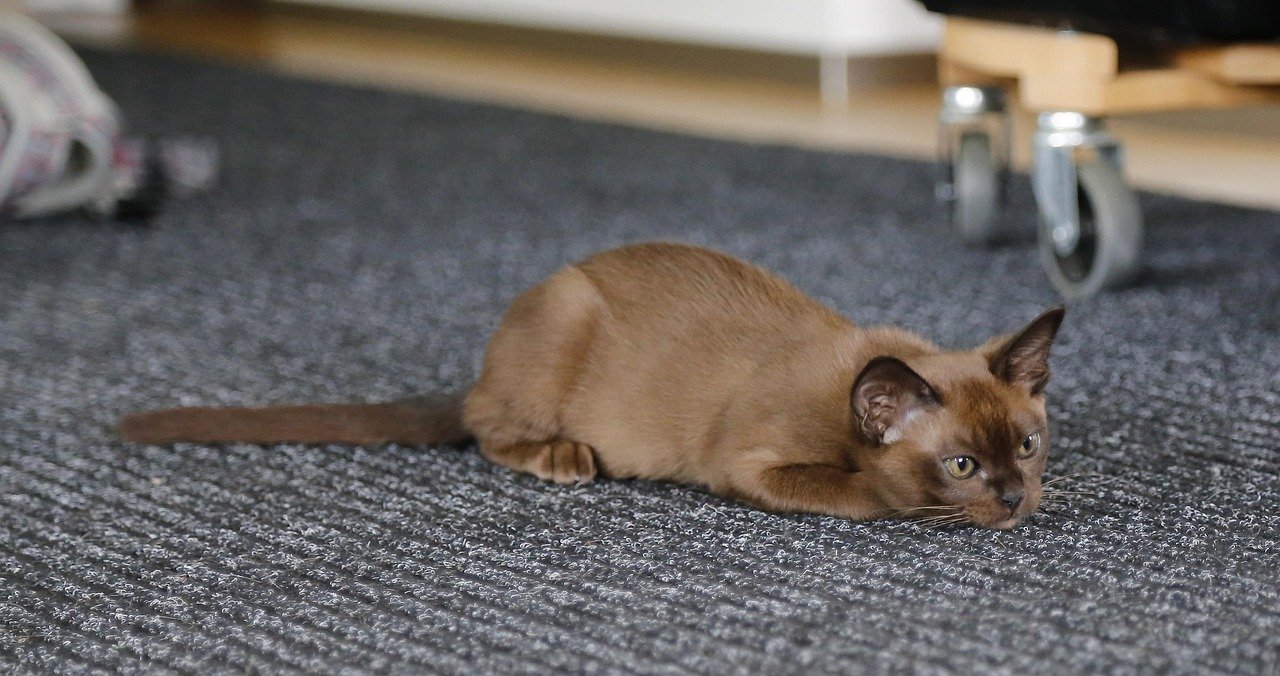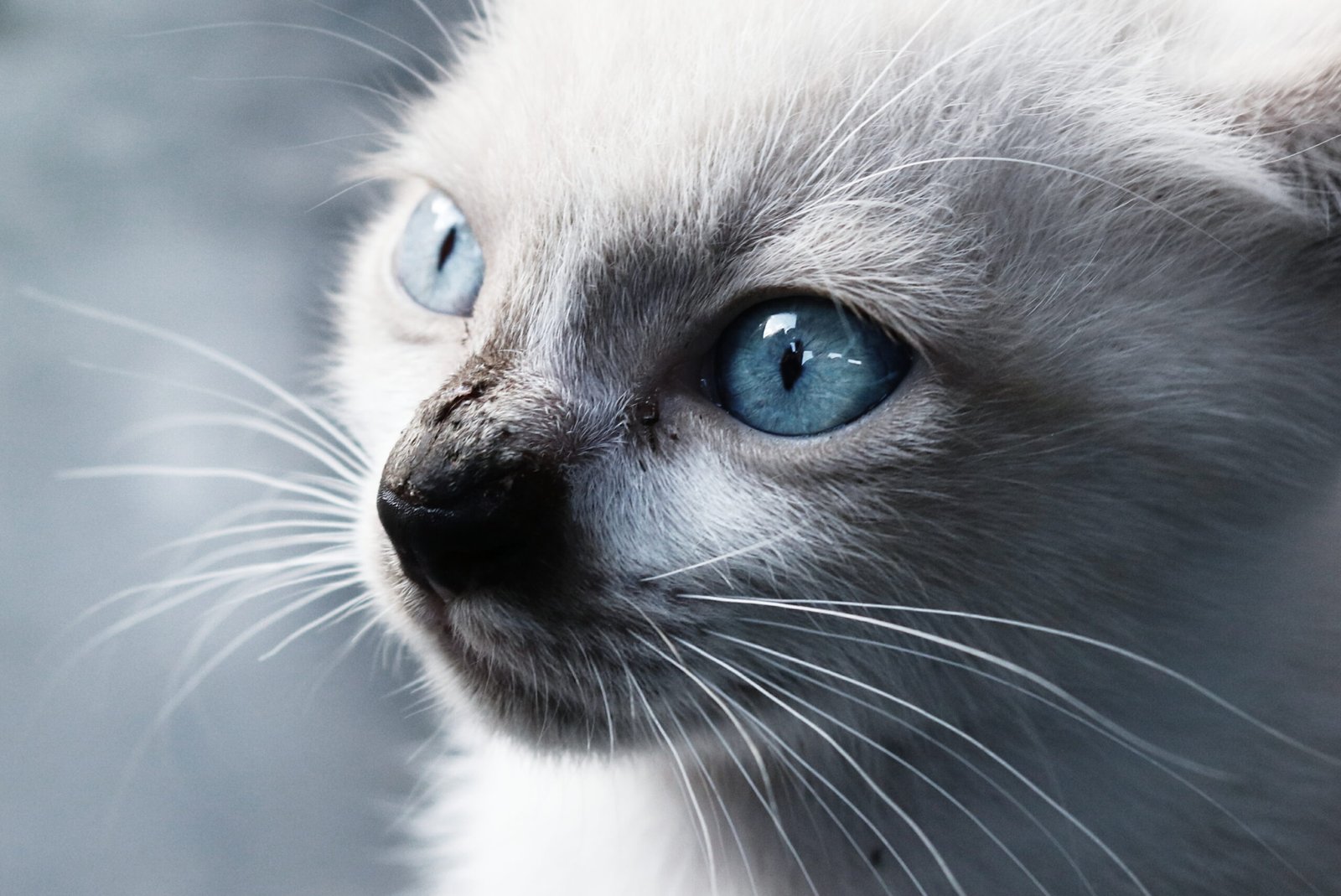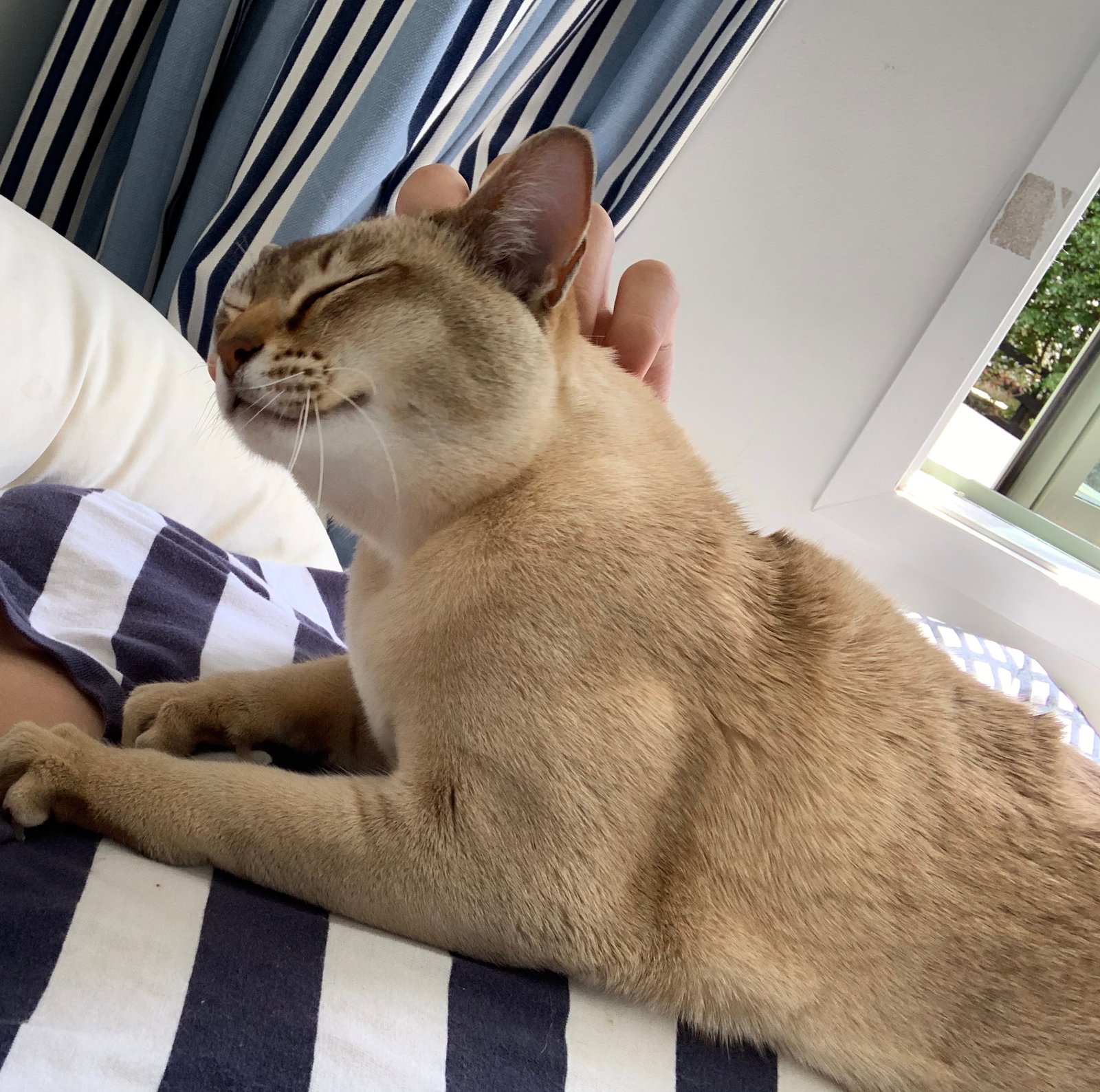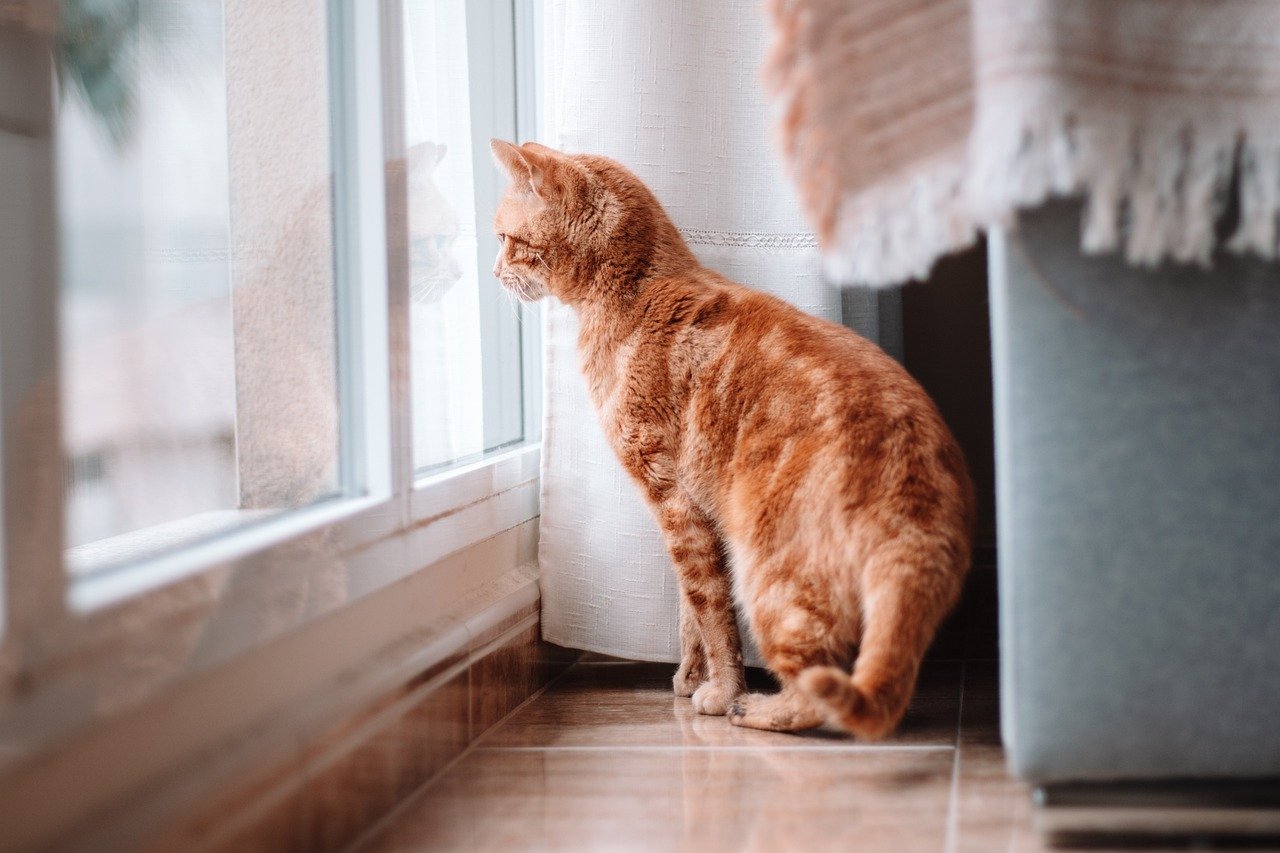When it comes to companionship, cats are often perceived as independent creatures who can entertain themselves for hours. However, not all feline friends are content with solitude. Some breeds, in fact, crave human interaction so much that being left alone, even for a short period, can be distressing. For cat enthusiasts and potential pet parents, understanding these needs is crucial. Here, we explore seven cat breeds that truly struggle when left alone, offering insights into their affectionate nature and the importance of companionship.
Siamese: The Vocal Companion
Siamese cats are renowned for their social nature and vocal tendencies. Known to form strong bonds with their human companions, these cats will often follow their owners around the house, engaging in a conversation-like meow. When left alone, even for brief periods, Siamese cats can become anxious and express their displeasure through persistent crying. Their need for attention makes them ideal for households where someone is usually present. Providing toys or interactive play sessions can help keep their minds occupied, but nothing replaces the comfort of human presence for these loyal companions.
Maine Coon: The Gentle Giant
Despite their large size, Maine Coons are gentle creatures with a deep-seated need for affection. Often referred to as the “dog of the cat world,” they thrive on human interaction and can become lonely when left alone. These cats enjoy being part of the family’s daily activities and will often seek out their owners for cuddles and playtime. If left alone for extended periods, Maine Coons may exhibit signs of stress, such as overeating or restlessness. To keep them content, consider adopting a pair or ensuring a family member is home frequently to provide the companionship they crave.
Ragdoll: The Relaxed Lap Cat
Ragdolls are aptly named for their tendency to go limp and relaxed when held, showcasing their trusting and affectionate nature. These cats form close bonds with their owners and thrive on companionship. Being left alone can lead to feelings of abandonment and sadness in Ragdolls, who prefer to spend their days lounging beside their humans. Their docile temperament makes them perfect lap cats, and they often follow their owners from room to room, seeking constant interaction. For those who work long hours, enlisting a pet sitter or providing stimulating toys can help alleviate their loneliness.
Burmese: The Affectionate Socialite

Burmese cats are well-known for their loving and sociable nature. They enjoy being the center of attention and can become distressed if left alone for too long. These cats thrive in environments where they receive regular interaction and affection. Burmese cats are often described as “dog-like” in their loyalty and will seek out their owners for play and companionship. Providing a stimulating environment with toys and puzzles can help keep them entertained, but nothing replaces the joy they find in human company. For households with busy schedules, having another pet can provide the companionship they need.
Scottish Fold: The Curious Observer
With their distinctive folded ears and curious nature, Scottish Folds are captivating companions. They enjoy being involved in family activities and can become lonely and bored if left alone. These cats are known for their playful demeanor and will often engage in interactive games with their owners. When left alone, Scottish Folds may become anxious and seek out ways to entertain themselves, sometimes leading to destructive behavior. Ensuring they have plenty of toys and opportunities for mental stimulation can help, but they truly thrive in environments where they are not left alone for extended periods.
Oriental Shorthair: The Energetic Entertainer
Oriental Shorthairs are known for their sleek appearance and energetic personalities. These cats are highly social and require regular interaction to remain content. Being left alone can lead to boredom and mischief, as they seek outlets for their boundless energy. Oriental Shorthairs enjoy playing games and learning tricks, making them great companions for active households. When left alone, they can become vocal and restless, expressing their need for companionship. To keep them happy, consider interactive toys and regular play sessions, ensuring they have plenty of opportunities to burn off energy in the company of their human friends.
Balinese: The Elegant Extrovert

Balinese cats, with their striking appearance and graceful demeanor, are true extroverts at heart. They form deep bonds with their owners and can become anxious when left alone. Known for their intelligence and playful nature, Balinese cats thrive in environments where they receive ample attention and stimulation. If left alone for too long, they may become vocal or resort to attention-seeking behaviors. To keep them content, provide a variety of toys and engage in interactive play sessions. Their need for companionship makes them ideal for families or individuals who can dedicate time to their care and interaction.
Strategies for Managing Separation Anxiety
For owners of these affectionate breeds, managing separation anxiety is crucial. Simple strategies can make a significant difference in their well-being. Providing a stimulating environment with a variety of toys and activities can help keep them occupied. Consider using puzzle feeders or interactive toys to engage their minds when you are not around. Another option is to introduce a companion pet, whether another cat or a friendly dog, to provide company. Additionally, setting up a routine can offer a sense of stability and predictability, helping alleviate anxiety when you need to leave the house.
Understanding Your Cat’s Needs

Understanding the needs of these social breeds is key to ensuring their happiness and well-being. Each cat is unique, and what works for one may not work for another. Spend time observing your cat’s behavior and preferences, tailoring your approach to suit their individual needs. Pay attention to their body language and vocalizations, which can offer insights into their emotional state. By being attentive and responsive, you can create a harmonious environment that caters to their social and emotional needs, ensuring they feel loved and secure.
The Importance of a Stimulating Environment

Creating a stimulating environment is essential for these social cat breeds. Offering a variety of toys, scratching posts, and climbing structures can help keep them engaged and entertained. Interactive toys, such as laser pointers or feather wands, can provide physical exercise and mental stimulation. Incorporating elements of nature, like cat-friendly plants or bird-watching stations near windows, can also enrich their environment. Regularly rotating toys and introducing new activities can prevent boredom and keep them mentally stimulated, reducing the likelihood of anxiety-related behaviors when left alone.
Recognizing Signs of Separation Anxiety
Recognizing the signs of separation anxiety is crucial for addressing the issue promptly. Common indicators include excessive vocalization, destructive behavior, excessive grooming, or changes in eating habits. Some cats may become clingy, following their owners everywhere, while others may withdraw and hide. Observing these behaviors can help you identify when your cat is experiencing distress. If you notice any of these signs, it’s important to take steps to address the underlying cause and provide support to help ease their anxiety.
Building a Strong Bond with Your Cat
Building a strong bond with your cat is essential for their emotional well-being. Spend quality time engaging in activities they enjoy, such as play sessions, grooming, or simply sitting together. Positive reinforcement, such as treats and praise, can strengthen your relationship and encourage desired behaviors. Establishing a routine that includes regular feeding, playtime, and affection can create a sense of security and trust. By fostering a strong bond, you can help your cat feel more confident and secure, even when you need to be apart.
Incorporating Technology for Cat Companionship
Incorporating technology can provide companionship for your cat when you’re not home. Interactive pet cameras allow you to check in on your cat and even engage with them through voice or laser pointers. Automated toys that move or dispense treats can provide entertainment and stimulation. Some apps offer games designed specifically for cats, keeping them entertained on your tablet or smartphone. While technology can never replace the human touch, it can be a valuable tool to help alleviate loneliness and keep your cat engaged when you’re away.
Evaluating Your Lifestyle and Compatibility

Before bringing home a cat from these social breeds, it’s important to evaluate your lifestyle and compatibility. Consider your work schedule, social commitments, and the amount of time you can dedicate to your pet. If you’re frequently away from home, these breeds may not be the best fit unless you have a support system in place. Understanding the level of companionship and interaction these cats require can help you make an informed decision, ensuring a harmonious match that fulfills both your needs and those of your feline friend.
Preparing Your Home for a Social Cat

Preparing your home for a social cat involves creating a comfortable and stimulating environment. Designate spaces where your cat can relax, play, and observe their surroundings. Provide cozy beds, scratching posts, and hideaways where they can retreat when needed. Ensure they have access to windows for natural light and entertainment. A well-prepared home can help your cat feel secure and content, reducing stress and promoting positive behavior. Taking the time to set up a welcoming environment can make a significant difference in your cat’s happiness and well-being.
Exploring Alternative Companionship Options
For those unable to be home frequently, exploring alternative companionship options can benefit your cat. Hiring a pet sitter or enlisting the help of a trusted friend or family member can provide social interaction and care during your absence. Consider enrolling your cat in a pet daycare, where they can interact with other animals and receive attention from caregivers. These options can help alleviate loneliness and provide the companionship your cat craves, ensuring they remain happy and content even when you’re not around.
Understanding the Role of Routine
Routine plays a vital role in the lives of these social cats. Establishing a consistent schedule for feeding, playtime, and rest can provide a sense of security and predictability. Cats thrive on routine, and deviations can lead to stress and anxiety. By maintaining a regular routine, you can help your cat feel more secure and confident, reducing the likelihood of anxiety-related behaviors. Consistency in daily activities can also strengthen the bond between you and your cat, fostering trust and understanding.
Providing Mental Stimulation and Enrichment
Providing mental stimulation and enrichment is essential for the well-being of these social cat breeds. Engage your cat in interactive play sessions, using toys that challenge their minds and encourage problem-solving. Puzzle feeders and treat-dispensing toys can provide mental stimulation and reward them for their efforts. Rotate toys regularly to prevent boredom and introduce new activities to keep them engaged. By offering a variety of mental challenges, you can help keep your cat’s mind sharp and reduce the likelihood of anxiety when left alone.
Conclusion

Understanding the unique needs of these social cat breeds is essential for ensuring their happiness and well-being. Each breed has its own personality and preferences, and providing the right environment and companionship can make a significant difference. By being attentive to their needs and incorporating strategies to manage separation anxiety, you can create a fulfilling and harmonious relationship with your feline friend. Whether through interactive play, routine, or exploring alternative companionship options, meeting the social needs of these cats can lead to a loving and rewarding partnership.
Hi, I’m Bola, a passionate writer and creative strategist with a knack for crafting compelling content that educates, inspires, and connects. Over the years, I’ve honed my skills across various writing fields, including content creation, copywriting, online course development, and video scriptwriting.
When I’m not at my desk, you’ll find me exploring new ideas, reading books, or brainstorming creative ways to solve challenges. I believe that words have the power to transform, and I’m here to help you leverage that power for success.
Thanks for stopping by, Keep coming to this website to checkout new articles form me. You’d always love it!






